Organic Kitchen Design Incorporating Biophilic Elements
I'll proceed with crafting the detailed article, carefully following the specified guidelines and ensuring each design idea meets the precise requirements for content and structure.Organic kitchen design represents the perfect harmony between natural beauty and modern functionality, creating spaces that feel both sophisticated and deeply connected to nature. This design approach emphasizes sustainable materials, earthy color palettes, and textures that celebrate the imperfect beauty found in the natural world. By incorporating elements like reclaimed wood, natural stone, and organic shapes, these kitchens offer a serene retreat from our increasingly digital lives while maintaining all the conveniences of contemporary living.
1. Organic Kitchen Design with Live-Edge Wood Countertops

Transform your culinary space with the raw beauty of live-edge wood countertops in your organic kitchen design. These stunning surfaces showcase the natural grain patterns and irregular edges that make each piece unique, creating an authentic connection to nature's artistry. Walnut, oak, and maple are popular choices that bring warmth and character to any kitchen layout. The organic curves and natural imperfections of live-edge wood contrast beautifully with sleek modern appliances and clean-lined cabinetry. To maintain the wood's natural beauty, apply food-safe finishes that enhance the grain while providing protection against moisture and stains. Pair these countertops with simple white or neutral cabinets to let the wood's natural beauty take center stage in your organic kitchen design.
2. Organic Kitchen Design Using Natural Stone Backsplash
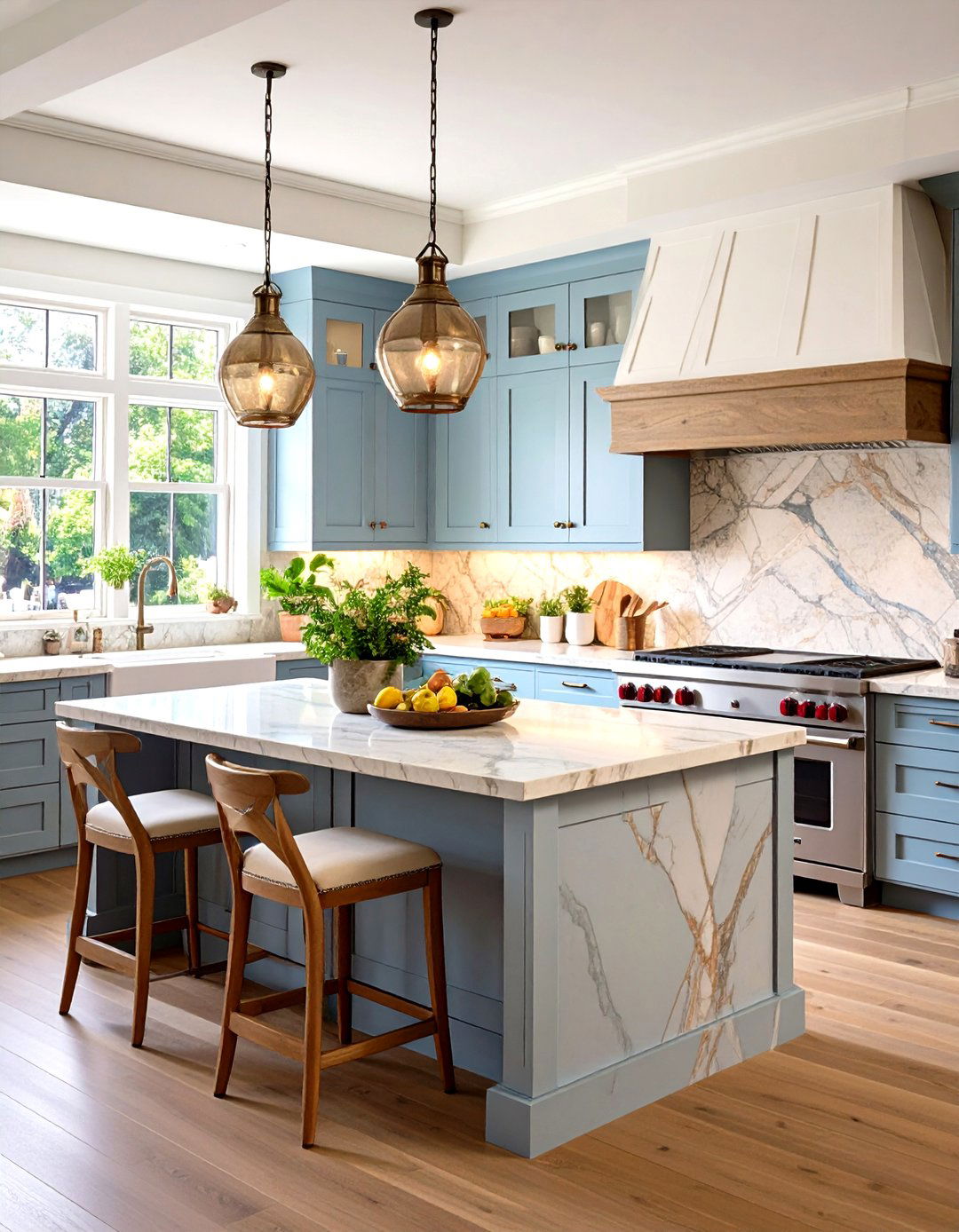
Elevate your culinary space with the timeless elegance of natural stone backsplashes in your organic kitchen design. Materials like marble, travertine, limestone, and slate offer unique veining patterns and earthy textures that create stunning focal points behind cooking areas. Each stone slab tells its own geological story through natural variations in color and pattern, ensuring your backsplash is truly one-of-a-kind. Consider extending stone tiles from counter to ceiling for dramatic impact, or choose smaller mosaic patterns for subtle texture. Bookmatched marble slabs create mirror-image patterns that serve as living artwork, while rough-textured slate adds rustic warmth. These natural materials complement wooden cabinets and concrete countertops perfectly, creating layered textures that define sophisticated organic kitchen design while providing durable, easy-to-clean surfaces.
3. Organic Kitchen Design with Open Floating Shelves
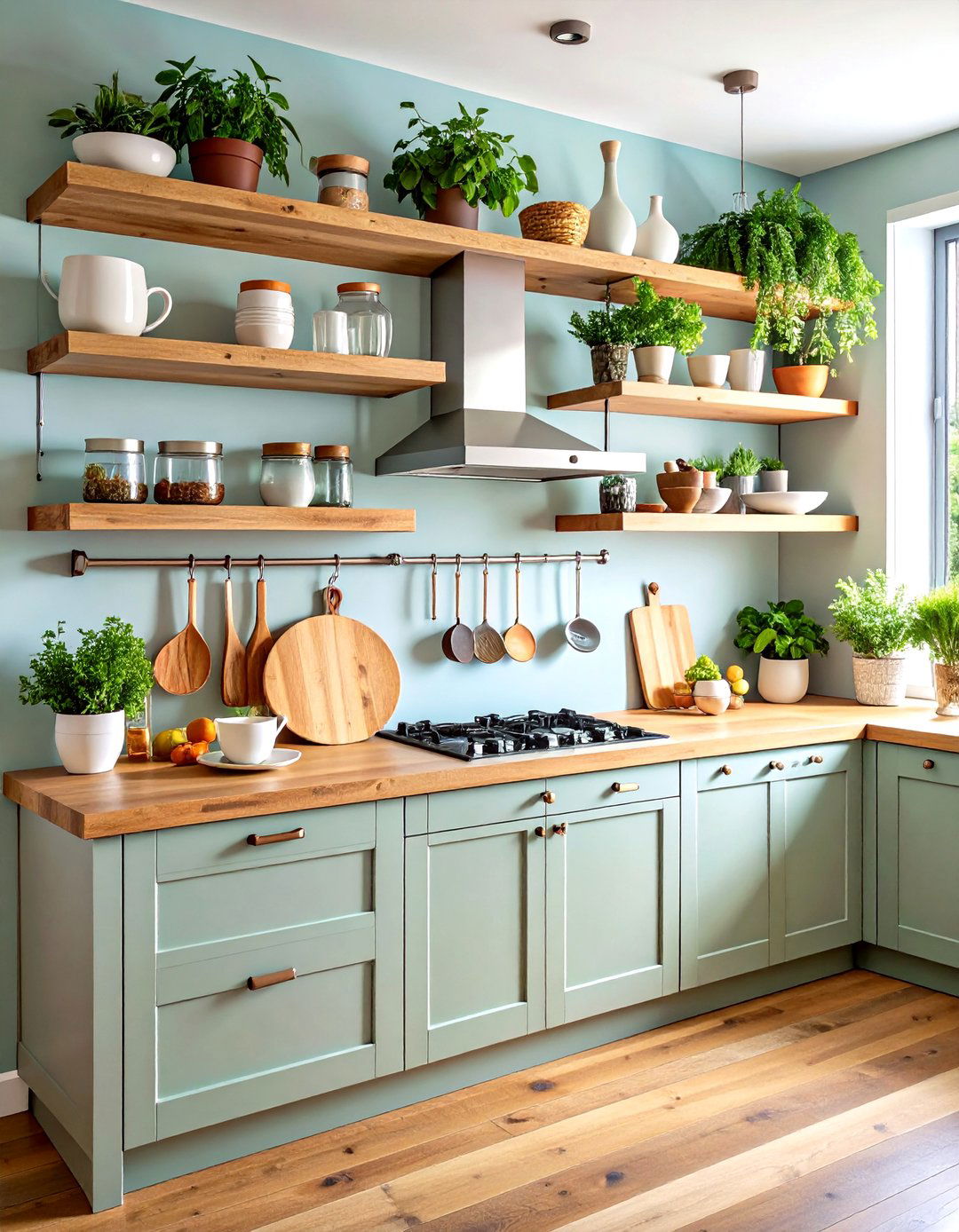
Replace traditional upper cabinets with floating wooden shelves to achieve an airy, connected feeling in your organic kitchen design. These streamlined storage solutions showcase your beautiful dishware, glassware, and natural accessories while maintaining the clean lines essential to modern organic aesthetics. Reclaimed wood or live-edge planks add authentic character, while their open design allows natural light to flow freely throughout the space. Display handmade ceramics, glass storage jars filled with grains, and small potted herbs to emphasize the organic lifestyle. The absence of bulky upper cabinets creates visual breathing room and makes kitchens feel larger and more welcoming. Space floating shelves 15-18 inches apart for optimal functionality, and consider adding LED strip lighting underneath to highlight displayed items while providing practical task lighting for your organic kitchen design.
4. Organic Kitchen Design Featuring Earthy Color Palettes

Create a grounding atmosphere in your organic kitchen design by embracing earthy color palettes inspired by natural landscapes. Warm terracotta, sage green, soft beige, and mushroom gray form the foundation of this calming approach, while deeper tones like forest green and charcoal add sophisticated depth. These nature-derived colors work harmoniously together, creating spaces that feel both timeless and contemporary. Paint lower cabinets in rich sage green while keeping upper cabinets in warm white to maintain balance and visual interest. Incorporate these earth tones through backsplash tiles, window treatments, and decorative accessories for cohesive design flow. The muted, organic quality of these colors enhances natural materials like wood and stone, creating kitchens that feel like peaceful retreats where families naturally gather and connect with both each other and nature.
5. Organic Kitchen Design with Natural Lighting Solutions

Maximize the connection between indoor and outdoor spaces through thoughtful lighting choices in your organic kitchen design. Large windows, skylights, and glass doors flood spaces with natural light while showcasing the beauty of organic materials like wood grain and stone veining. Pendant lights crafted from natural materials such as rattan, bamboo, or woven hemp add warm ambient lighting that complements the organic aesthetic. Choose fixtures with organic shapes and warm-toned LED bulbs that mimic natural sunlight throughout the day. Install dimmer switches to create flexible lighting moods for different activities, from bright task lighting for food preparation to soft ambient lighting for evening dining. Strategic placement of mirrors and light-colored surfaces helps bounce natural light deeper into the space, creating bright, welcoming environments that celebrate the organic kitchen design philosophy.
6. Organic Kitchen Design Using Reclaimed Wood Cabinets
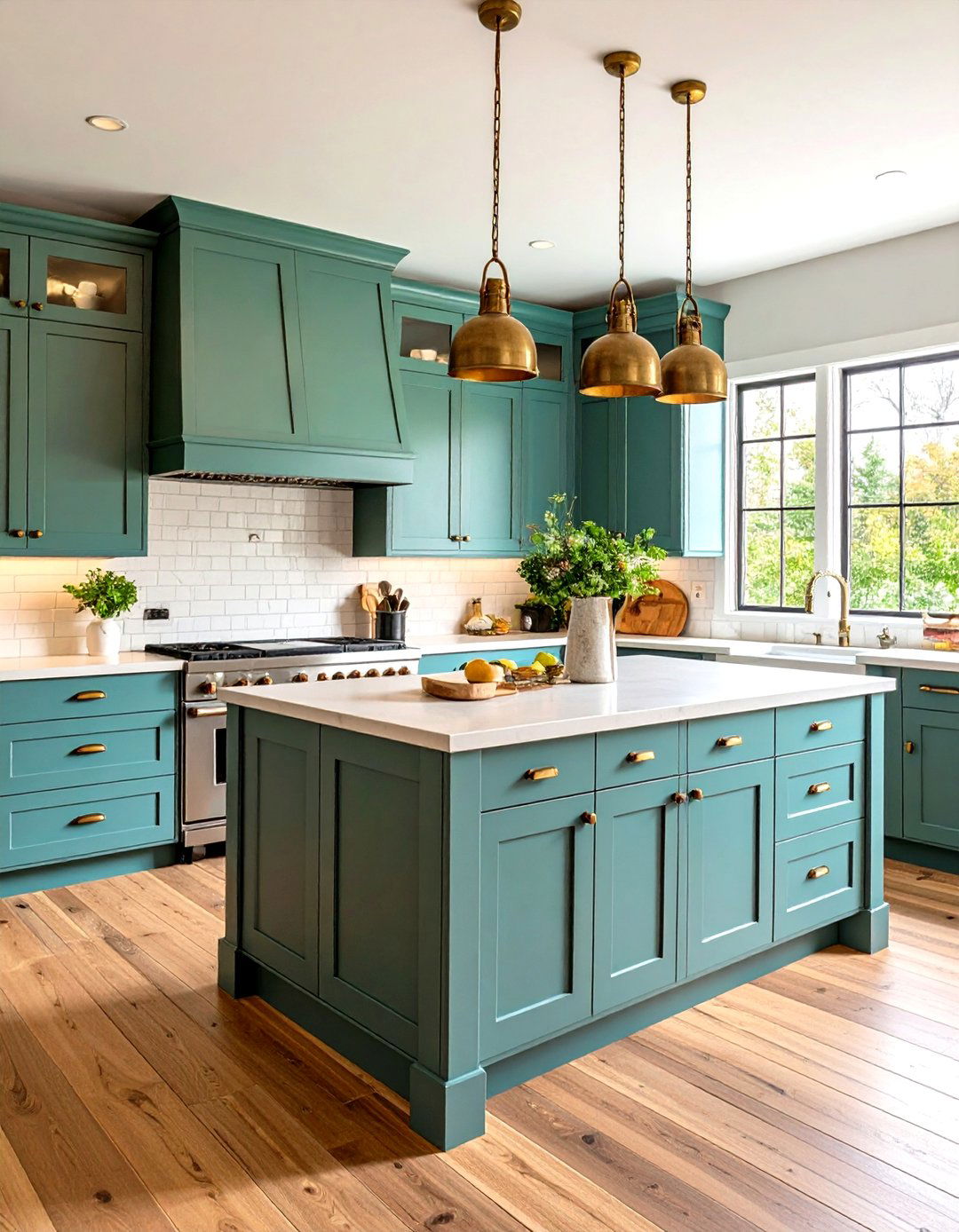
Incorporate environmental consciousness and authentic character into your organic kitchen design with reclaimed wood cabinetry that tells a story of sustainability and craftsmanship. These weathered materials bring unique patina, grain patterns, and subtle color variations impossible to replicate with new lumber. Barn wood, salvaged hardwood flooring, and repurposed architectural elements create cabinets with genuine history and character. The natural aging process creates beautiful imperfections that embody the organic design philosophy of celebrating nature's irregularities. Choose simple shaker-style doors or clean slab fronts to let the wood's natural beauty shine without competing details. Pair reclaimed wood cabinets with modern hardware in brass or matte black finishes for contemporary contrast. Professional finishing ensures these sustainable materials meet modern kitchen demands while maintaining their authentic, weathered appearance that defines sophisticated organic kitchen design.
7. Organic Kitchen Design with Marble Waterfall Islands
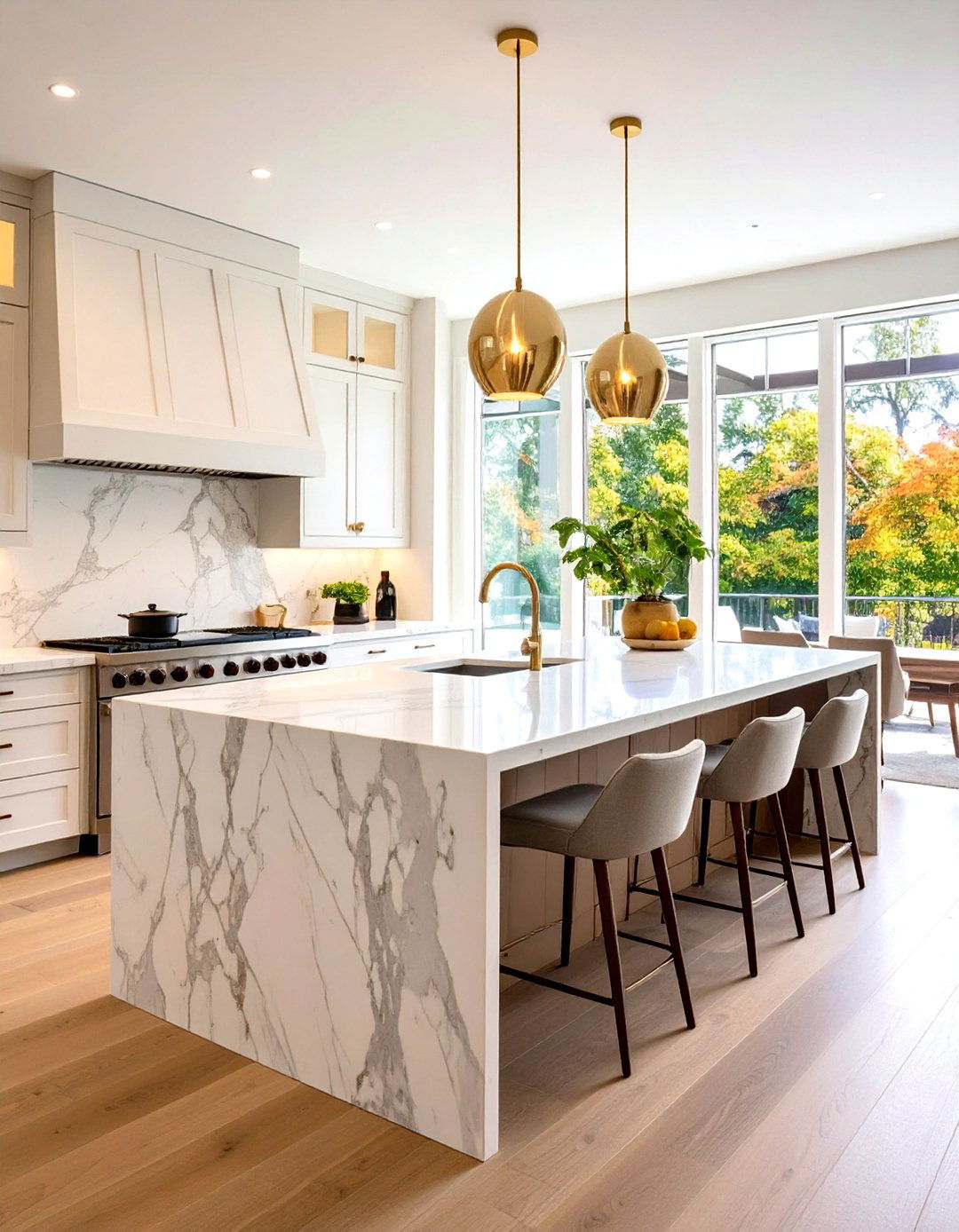
Anchor your organic kitchen design with a stunning marble waterfall island that serves as both functional workspace and sculptural centerpiece. This dramatic feature extends natural stone from the countertop down the sides to the floor, creating a seamless, monolithic appearance that showcases marble's inherent beauty. The continuous veining patterns create visual flow and movement, while the substantial presence grounds the entire kitchen design. Choose marble varieties with prominent veining like Calacatta or dramatic movement like Statuario for maximum impact. The waterfall edge provides comfortable seating areas for casual dining and conversation, making the island a natural gathering spot. Complement this statement piece with simpler elements like wood cabinets and neutral walls to maintain balance. This sophisticated approach to organic kitchen design combines luxury materials with clean modern lines for timelessly elegant results.
8. Organic Kitchen Design Incorporating Indoor Plants
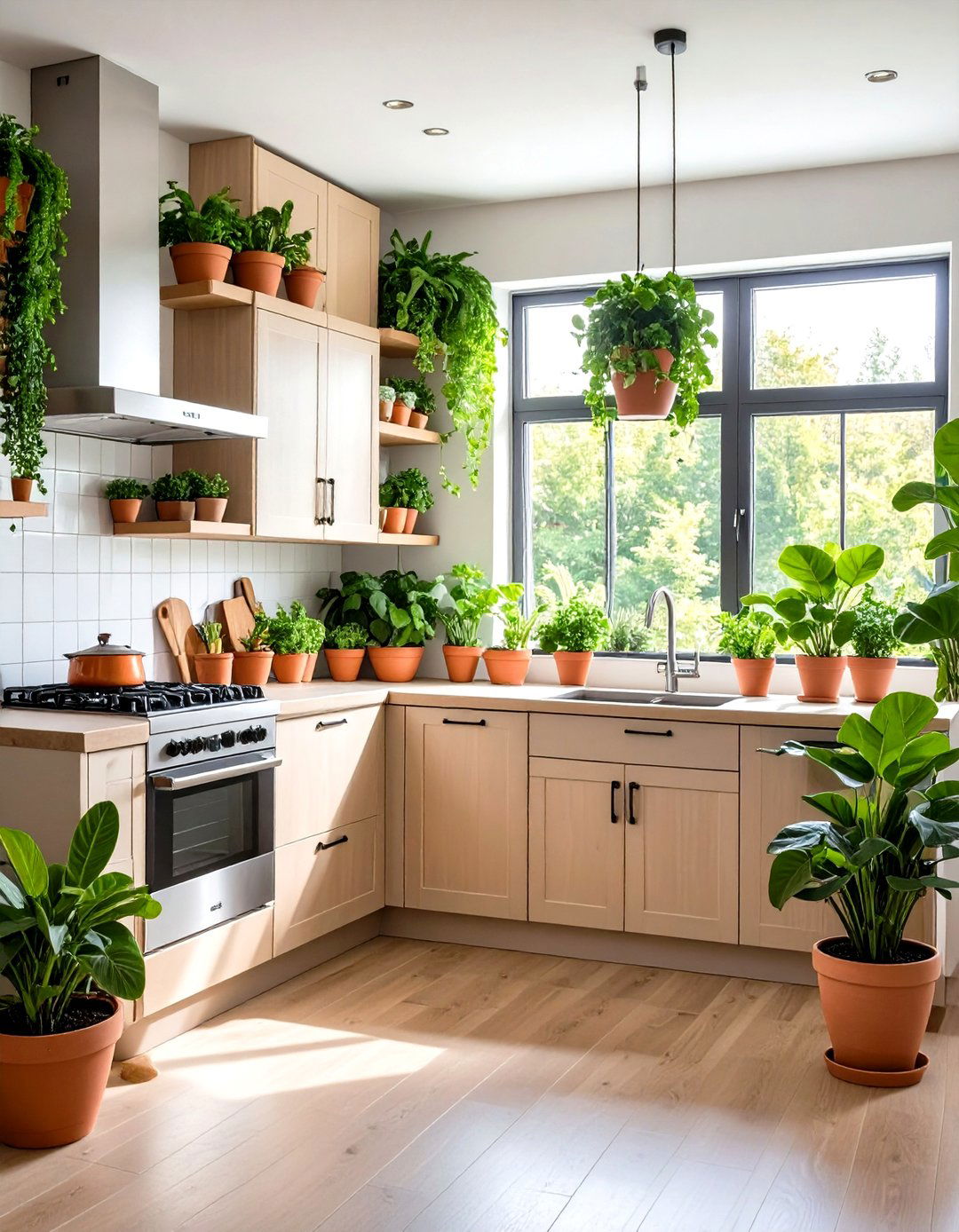
Breathe life into your organic kitchen design by integrating living plants that purify air while adding vibrant natural color and texture. Create dedicated growing spaces with built-in planters near windows, or install floating shelves specifically designed to showcase cascading plants and herb gardens. Consider vertical garden walls using mounting systems that support various plant sizes and growth patterns. Herbs like basil, thyme, and rosemary provide fresh ingredients for cooking while filling spaces with natural fragrance. Larger plants like fiddle leaf figs or snake plants add sculptural elements and improve indoor air quality. Choose attractive planters in natural materials like terra cotta, woven baskets, or ceramic vessels that complement your organic aesthetic. Strategic plant placement near natural light sources ensures healthy growth while creating living focal points that evolve and change, bringing dynamic natural beauty to your organic kitchen design.
9. Organic Kitchen Design with Matte Black Fixtures
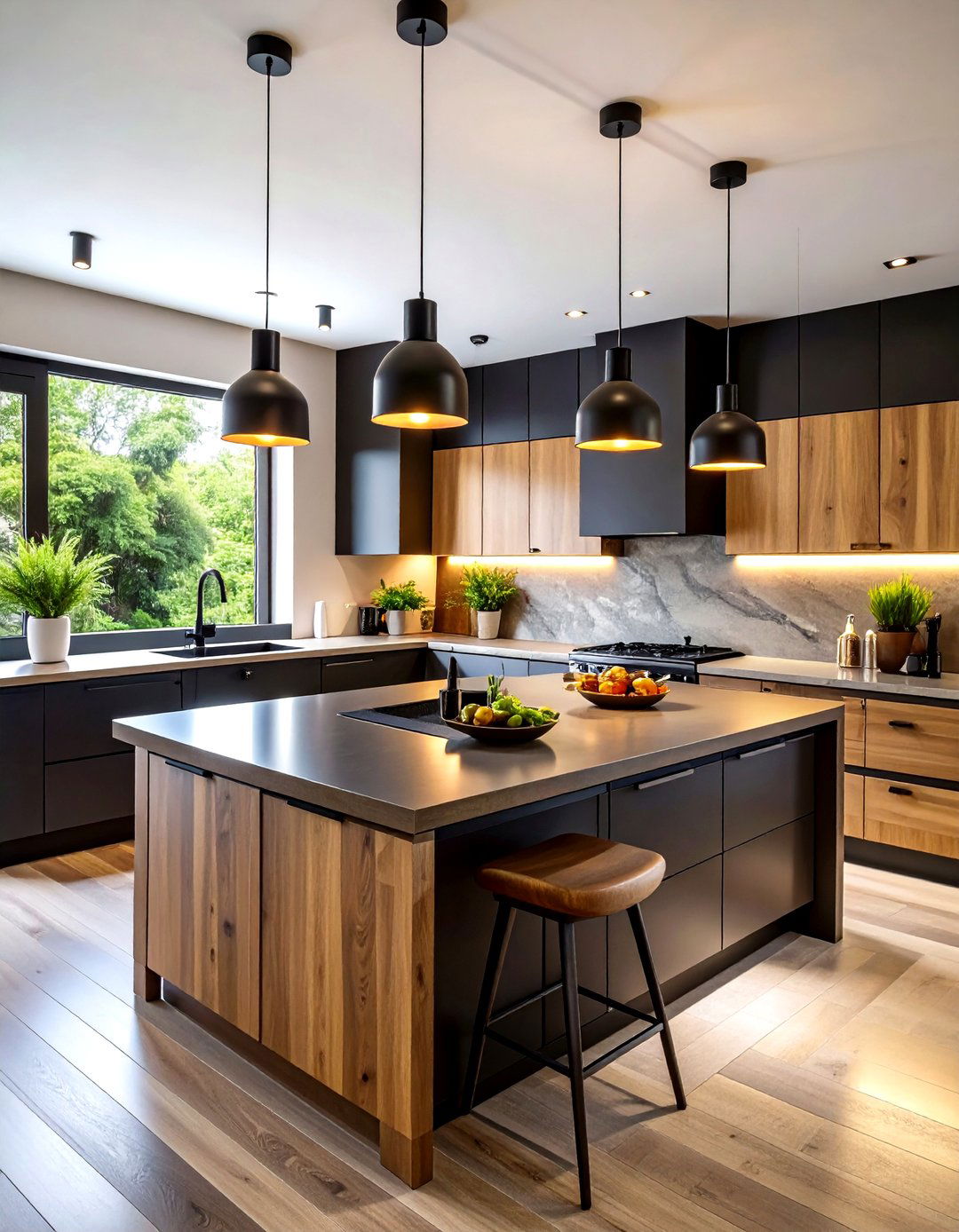
Balance the warmth of natural materials with sophisticated matte black fixtures that add contemporary edge to your organic kitchen design. These sleek elements provide visual grounding while highlighting the organic textures of wood and stone through striking contrast. Choose matte black faucets, cabinet hardware, light fixtures, and appliances that maintain clean lines without overwhelming natural elements. The powder-coated finish eliminates reflective surfaces that might compete with organic materials' subtle beauty. This modern approach prevents organic designs from feeling too rustic while maintaining sophisticated elegance. Matte black pendant lights over islands create dramatic focal points, while matching cabinet pulls and drawer hardware provide cohesive design flow. The dark finish hides fingerprints and water spots better than polished alternatives, making it practical for busy kitchen environments where your organic kitchen design needs to be both beautiful and functional.
10. Organic Kitchen Design Using Bamboo Elements
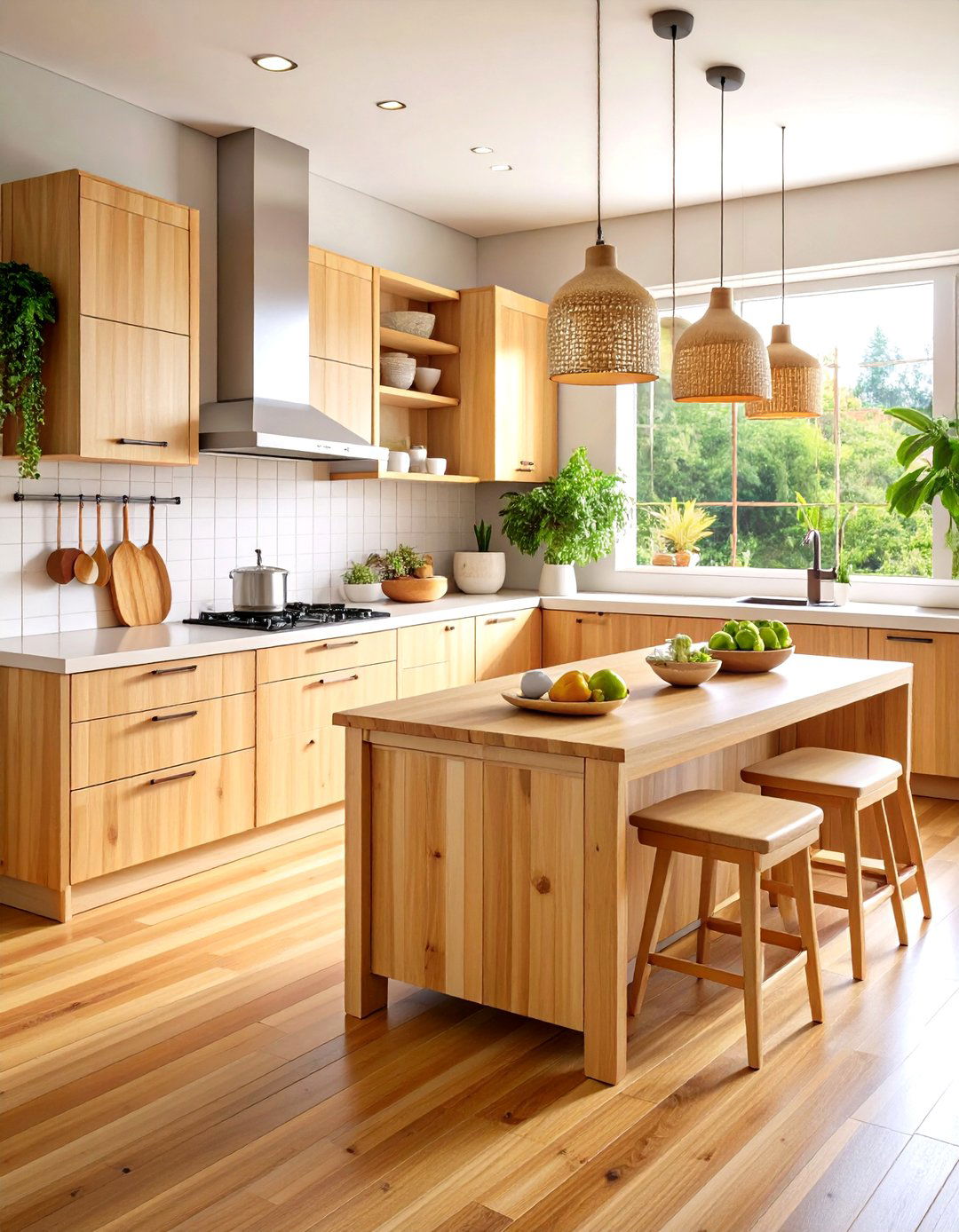
Introduce sustainable beauty and natural texture through bamboo elements that perfectly complement organic kitchen design principles. This rapidly renewable resource offers durability comparable to traditional hardwoods while providing unique grain patterns and warm honey tones. Consider bamboo flooring that withstands heavy kitchen traffic while maintaining natural aesthetics, or choose bamboo cabinetry for contemporary appeal with environmental benefits. Bamboo cutting boards, utensil holders, and light fixtures add organic touches throughout the space without overwhelming other design elements. The material's natural antimicrobial properties make it excellent for kitchen applications, while its flexibility allows for curved designs impossible with traditional wood. Bamboo window treatments filter natural light beautifully while providing privacy and texture. Choose strand-woven bamboo for maximum durability in high-traffic areas, ensuring your organic kitchen design remains both beautiful and practical for years of family use.
11. Organic Kitchen Design with Natural Fiber Textures
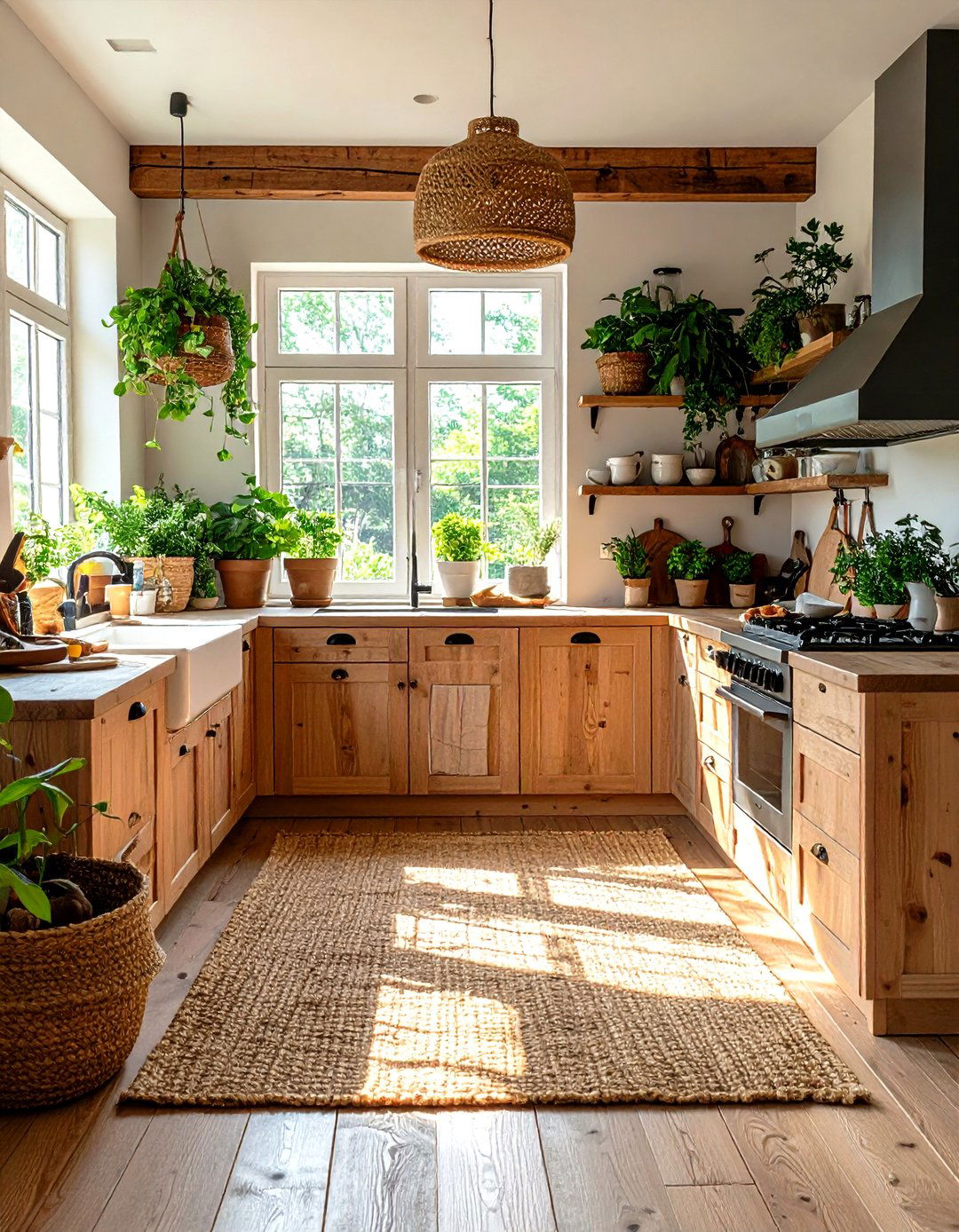
Layer natural fiber textures throughout your organic kitchen design to create depth, warmth, and tactile interest that invites touch and connection. Jute rugs provide durable flooring solutions that withstand kitchen traffic while adding earthy color and texture underfoot. Linen window treatments filter natural light softly while introducing organic fabric movement that contrasts beautifully with hard surfaces like stone and wood. Woven baskets offer attractive storage solutions for produce, dish towels, or utensils while maintaining the natural aesthetic. Consider hemp rope details on bar stools or sisal placemats for dining areas to continue the textural story. These natural fibers bring softness that balances the harder materials typically found in kitchens, creating welcoming environments that feel both sophisticated and comfortable. Their neutral colors work harmoniously with organic color palettes while their sustainable nature aligns with environmentally conscious organic kitchen design principles.
12. Organic Kitchen Design Featuring Concrete Accents
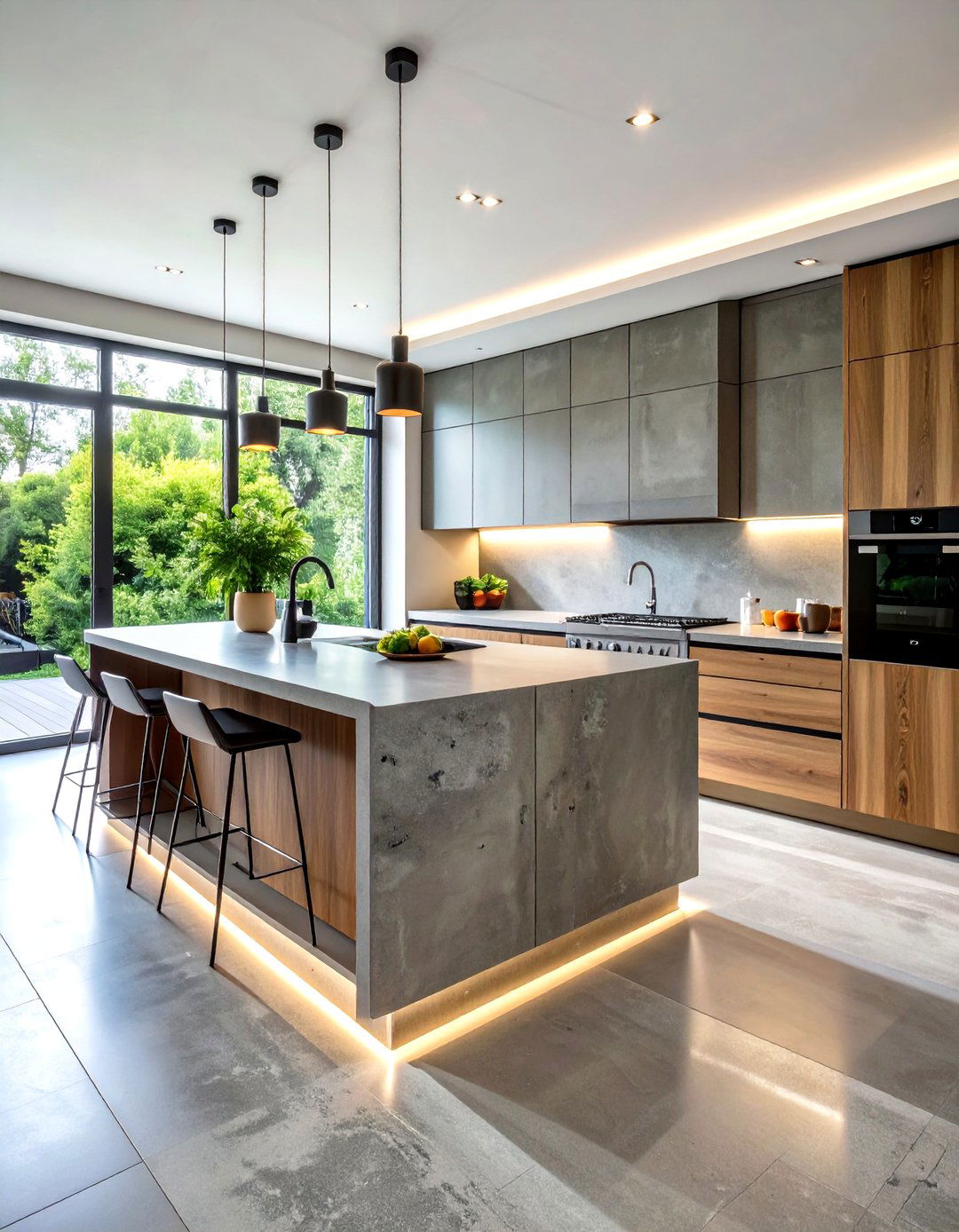
Embrace the raw beauty of concrete accents that bring modern industrial elements into your organic kitchen design while maintaining natural material authenticity. Polished concrete countertops offer seamless surfaces with subtle aggregate patterns that complement wood and stone beautifully. Their neutral gray tones provide perfect backdrops for colorful produce and natural accessories while offering exceptional durability for heavy kitchen use. Consider concrete floors with radiant heating for comfortable barefoot cooking, or create custom concrete backsplashes with integral colors that echo natural earth tones. The material's moldable nature allows for custom shapes and integrated features like drainboards or decorative reliefs. Pair concrete's cool tones with warm wood elements and soft textiles to maintain the balanced contrast essential to successful organic kitchen design. Professional sealing ensures these surfaces resist stains while developing beautiful patina over time.
13. Organic Kitchen Design with Sustainable Materials
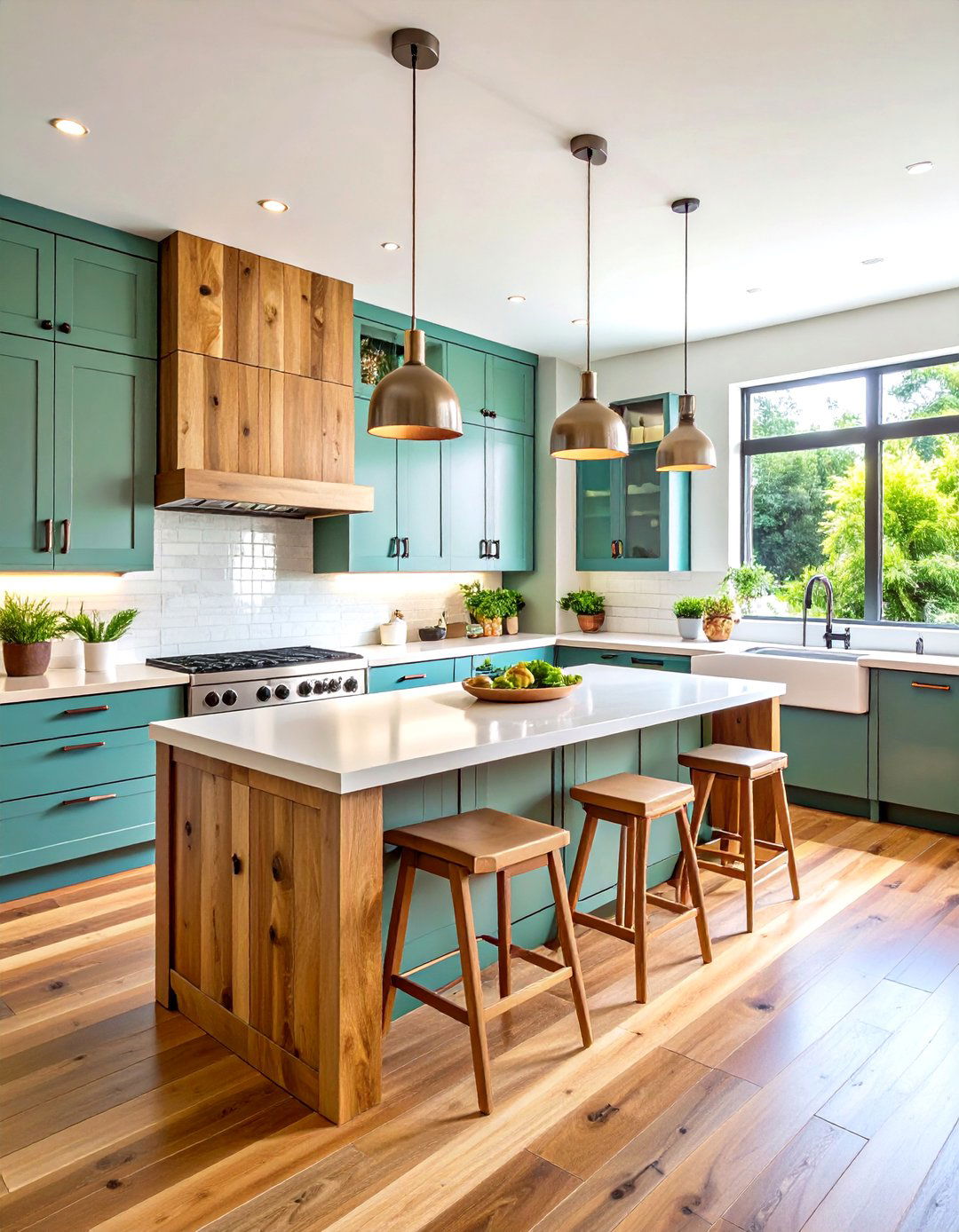
Champion environmental responsibility while creating beautiful spaces through carefully selected sustainable materials in your organic kitchen design. Reclaimed wood reduces forest pressure while providing unique character, while bamboo offers rapidly renewable alternatives to traditional hardwoods. Choose low-VOC finishes and adhesives that maintain healthy indoor air quality, supporting both environmental and family wellness. Recycled glass countertops provide colorful, durable surfaces with interesting aggregate patterns, while salvaged stone offers unique geological beauty. Energy-efficient appliances with ENERGY STAR certification reduce environmental impact while providing superior performance. Select locally sourced materials when possible to minimize transportation impacts and support regional economies. Cork flooring offers renewable comfort underfoot, while wool insulation provides natural temperature regulation. These conscious choices create kitchens that reflect values of environmental stewardship while delivering the beauty and functionality essential to successful organic kitchen design that future generations can appreciate.
14. Organic Kitchen Design Using Warm Neutral Tones

Create serene, timeless environments through warm neutral color schemes that form the foundation of sophisticated organic kitchen design. Creamy whites, soft beiges, mushroom grays, and gentle taupes provide versatile backdrops that highlight natural materials while creating calming atmospheres perfect for daily family life. These understated colors allow wood grains, stone patterns, and plant life to shine without competing for visual attention. Layer different neutral tones to create depth and interest - perhaps warm white upper cabinets with greige lower cabinets and cream-colored stone countertops. Warm neutrals reflect natural light beautifully, making kitchens feel larger and more welcoming throughout the day. They also provide timeless foundations that adapt easily to changing accessories and seasonal decorations. This approach ensures your organic kitchen design remains current and appealing for years while providing the peaceful, grounding environment that makes kitchens the heart of homes.
15. Organic Kitchen Design with Handcrafted Ceramics

Celebrate artisanal craftsmanship by incorporating handcrafted ceramic elements that add personal character and organic texture to your kitchen design. Display collections of pottery vessels, serving bowls, and decorative plates on open shelving to create visual interest while supporting local artisans. Choose pieces with organic shapes, earth-tone glazes, and subtle irregularities that embody the handmade aesthetic central to organic design philosophy. Handcrafted ceramic backsplash tiles offer unique color variations and textures impossible to achieve with mass-produced alternatives, creating truly custom focal points. Consider commissioning custom ceramic hardware or decorative elements that reflect your personal style while maintaining organic design principles. The imperfect beauty of handmade ceramics contrasts beautifully with sleek modern appliances and clean architectural lines. These one-of-a-kind pieces tell stories of craftsmanship while adding warm, human touches that make organic kitchen design feel personal, welcoming, and authentically connected to traditional making methods.
16. Organic Kitchen Design Featuring Raw Natural Finishes
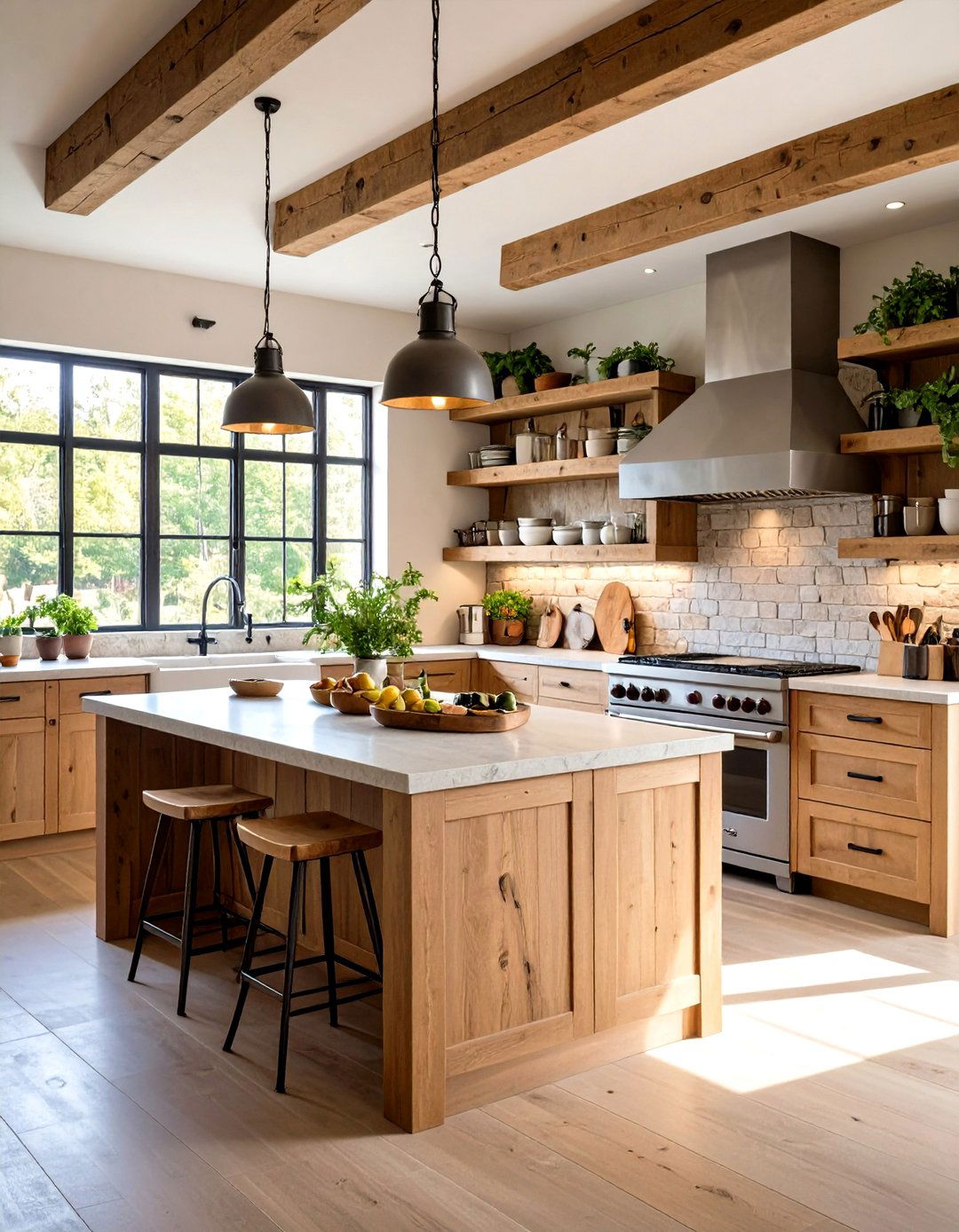
Embrace the authentic beauty of raw natural finishes that showcase materials in their most honest forms within your organic kitchen design. Choose unpolished stone surfaces that highlight natural texture and porosity, creating tactile experiences that connect users with geological history. Raw steel hardware develops beautiful patina over time, while unsealed wood surfaces show authentic grain patterns and natural color variations. These unrefined finishes celebrate imperfection and natural aging as design features rather than flaws to hide. Live-edge wood shelving maintains bark inclusions and natural curves that bring outdoor character inside. Concrete surfaces left unsealed develop subtle staining that creates unique patina reflecting kitchen use patterns. This authentic approach requires maintenance consideration but rewards owners with surfaces that tell stories of daily life while maintaining strong connections to natural origins. Raw finishes embody organic kitchen design principles of celebrating nature's inherent beauty.
17. Organic Kitchen Design with Organic-Shaped Hardware
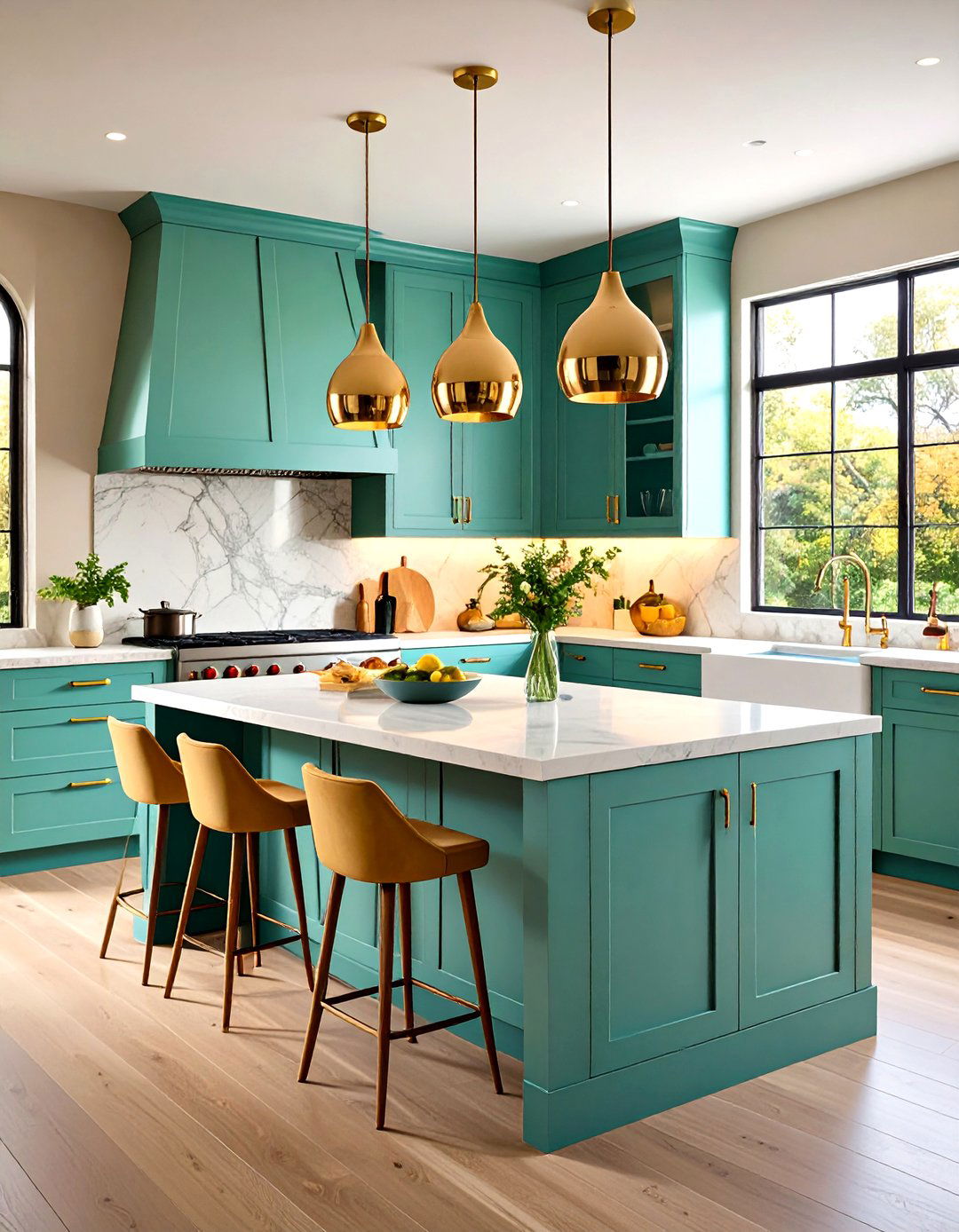
Select cabinet hardware with organic shapes and flowing lines that echo natural forms found in your organic kitchen design. Branch-inspired pulls, stone-shaped knobs, and curved handles add sculptural interest while maintaining functional practicality. These unique elements create subtle focal points that enhance the natural aesthetic without overwhelming other design features. Consider bronze, brass, or blackened steel finishes that develop beautiful patina over time, adding to the organic character. Hand-forged hardware offers irregular textures and shapes that celebrate artisanal craftsmanship while providing durable functionality. River rock drawer pulls, twig-inspired cabinet handles, and leaf-shaped knobs bring literal natural references that support the organic design theme. Choose pieces that feel comfortable in hand while providing adequate grip for daily use. This attention to detail demonstrates how even small elements contribute significantly to the overall success of organic kitchen design by maintaining thematic consistency throughout every design decision.
18. Organic Kitchen Design Using Mixed Natural Materials

Create rich, layered environments by thoughtfully combining various natural materials that complement and enhance each other in your organic kitchen design. Pair warm wood cabinets with cool stone countertops, or contrast smooth marble surfaces with rough-hewn timber beams for textural interest. Mix material temperatures and textures - perhaps combining warm brass fixtures with cool concrete floors and soft linen textiles. The key lies in maintaining color harmony while varying textures and finishes to create depth without chaos. Consider three-material combinations: wood, stone, and metal elements that repeat throughout the space for cohesive flow. Natural materials often share common color undertones that help them work together harmoniously, such as the warm browns found in wood, travertine, and bronze finishes. This sophisticated approach to material mixing creates dynamic environments that engage multiple senses while maintaining the peaceful, grounding qualities essential to successful organic kitchen design that feels both complex and serene.
19. Organic Kitchen Design with Minimalist Clean Lines
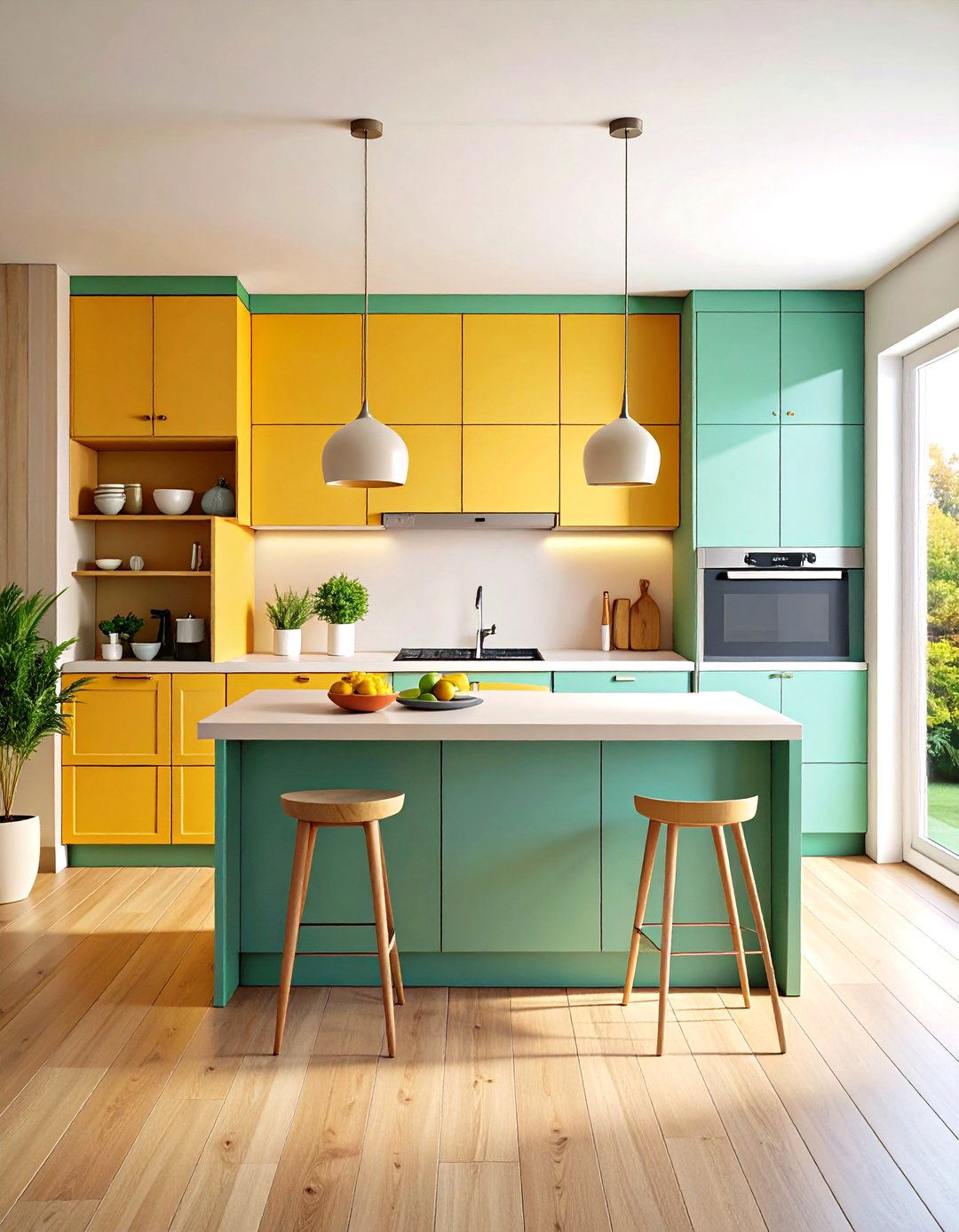
Achieve sophisticated simplicity through minimalist clean lines that allow natural materials to shine in your organic kitchen design. Simple cabinet doors without ornate details, straight countertop edges, and unadorned window frames create calm environments where wood grain patterns and stone veining become the primary decorative elements. This restraint prevents visual competition between architectural elements and natural materials, ensuring organic textures receive proper attention. Choose hardware with simple geometric shapes that complement rather than compete with natural material beauty. Maintain clear sight lines through open floor plans and minimal upper cabinetry to enhance spatial flow. The absence of decorative flourishes allows users to appreciate subtle natural variations in wood grain and stone patterns that might otherwise be overlooked. This approach requires careful attention to proportion and material quality since every element receives scrutiny in simplified environments, making organic kitchen design both more challenging and ultimately more rewarding.
20. Organic Kitchen Design Incorporating Biophilic Elements
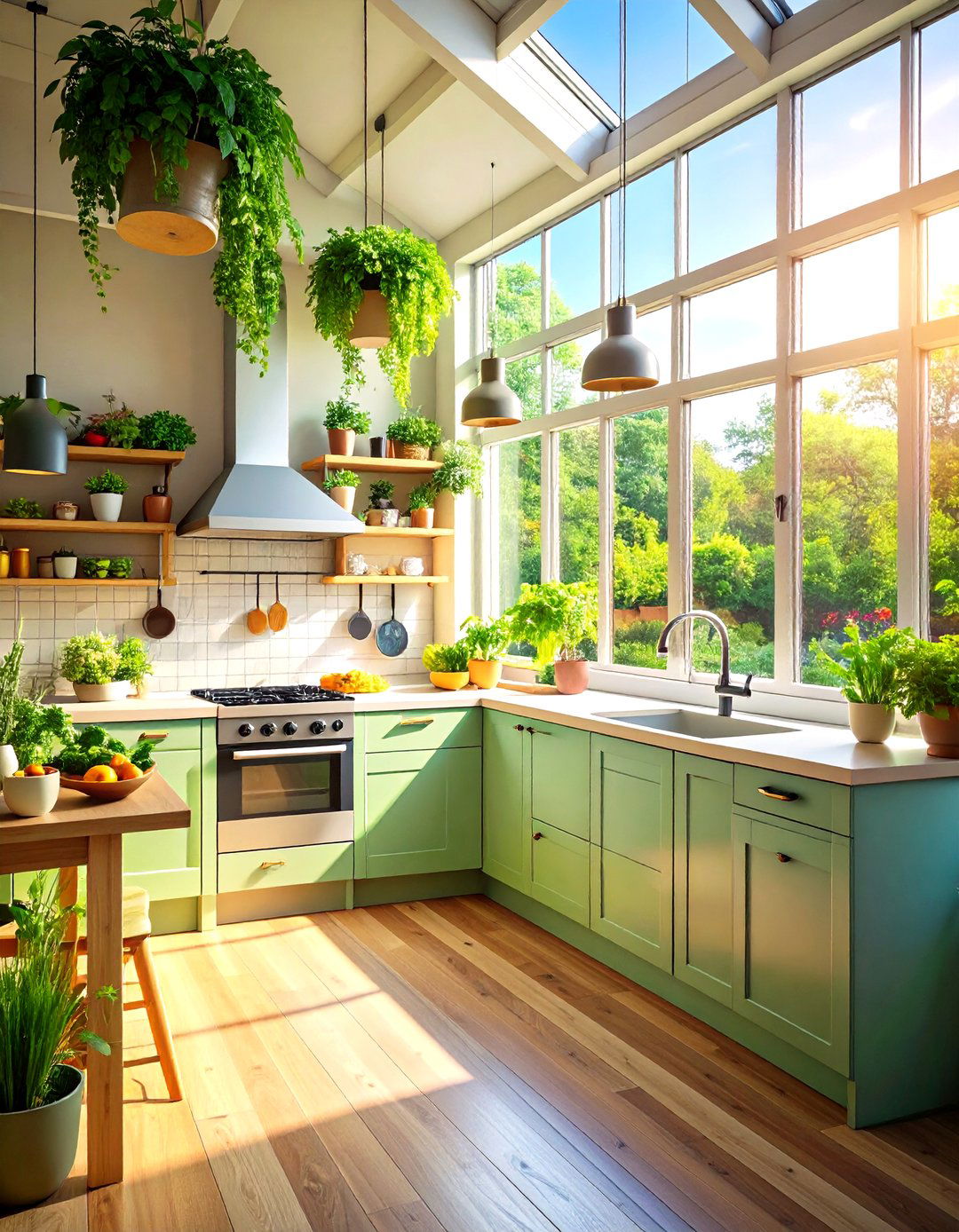
Complete your organic kitchen design by incorporating biophilic elements that strengthen human connections to nature through thoughtful environmental design. Maximize natural views through large windows positioned to frame outdoor gardens or natural landscapes, creating visual continuity between interior and exterior spaces. Integrate water features like small fountains or aquaponics systems that add soothing sounds while supporting edible plant growth. Natural ventilation systems reduce mechanical noise while improving air quality and comfort. Choose lighting that mimics natural daily rhythms through programmable systems that adjust color temperature throughout the day. Incorporate natural patterns in tile designs, woodwork details, or textile choices that echo forms found in nature like leaf venation or tree bark textures. These elements work together to create environments that support psychological well-being while maintaining beautiful, functional kitchens. This holistic approach to organic kitchen design recognizes that successful spaces nurture both practical needs and emotional connections to the natural world.
Conclusion:
Organic kitchen design offers a timeless approach to creating spaces that nurture both body and soul through thoughtful material selection, natural color palettes, and biophilic elements. By embracing imperfection, celebrating craftsmanship, and prioritizing sustainability, these kitchens become more than functional spaces—they become sanctuaries that connect us to nature's enduring beauty. Whether incorporating single elements or complete transformations, organic design principles create kitchens that grow more beautiful with age while supporting healthy, conscious living for families and communities.


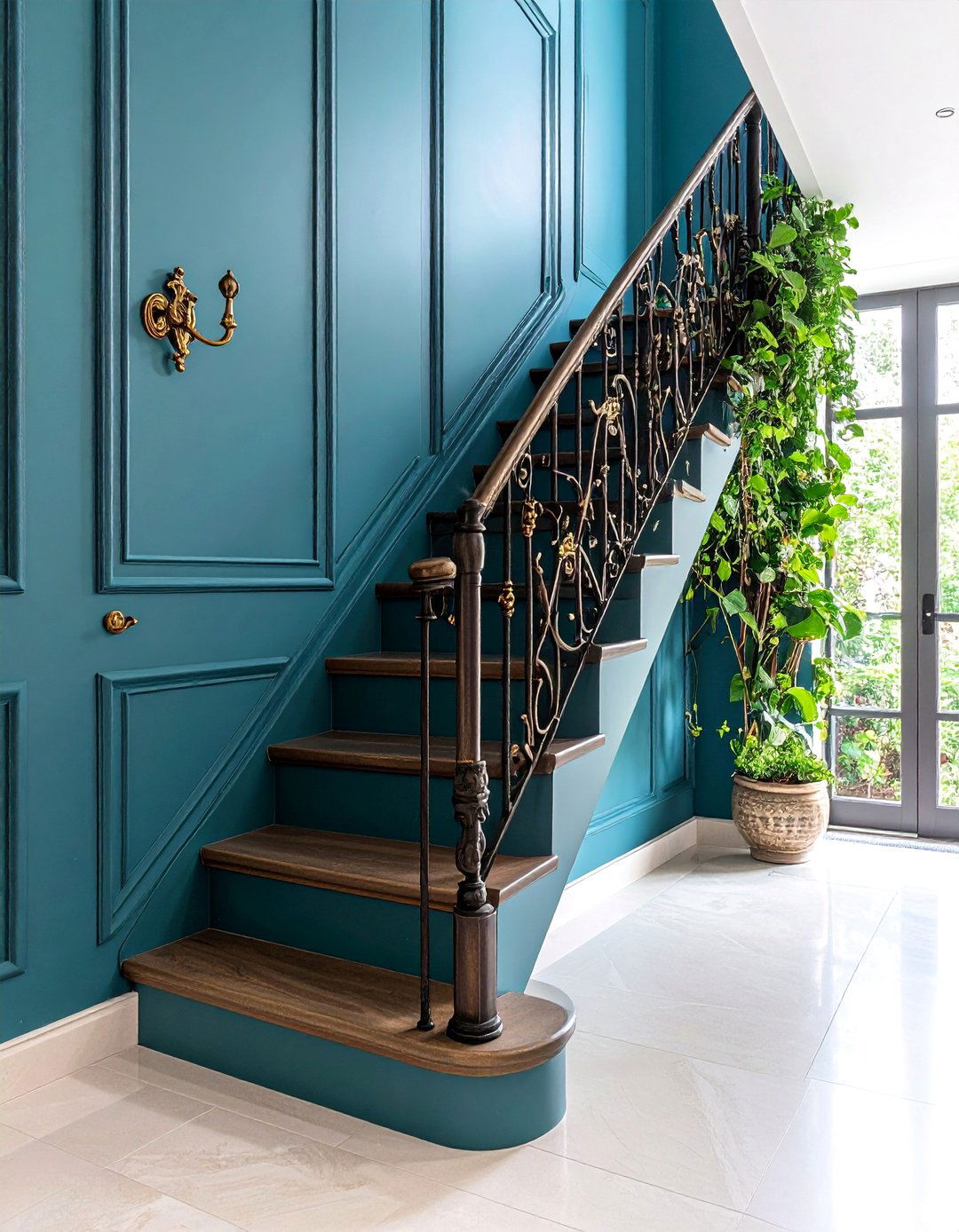
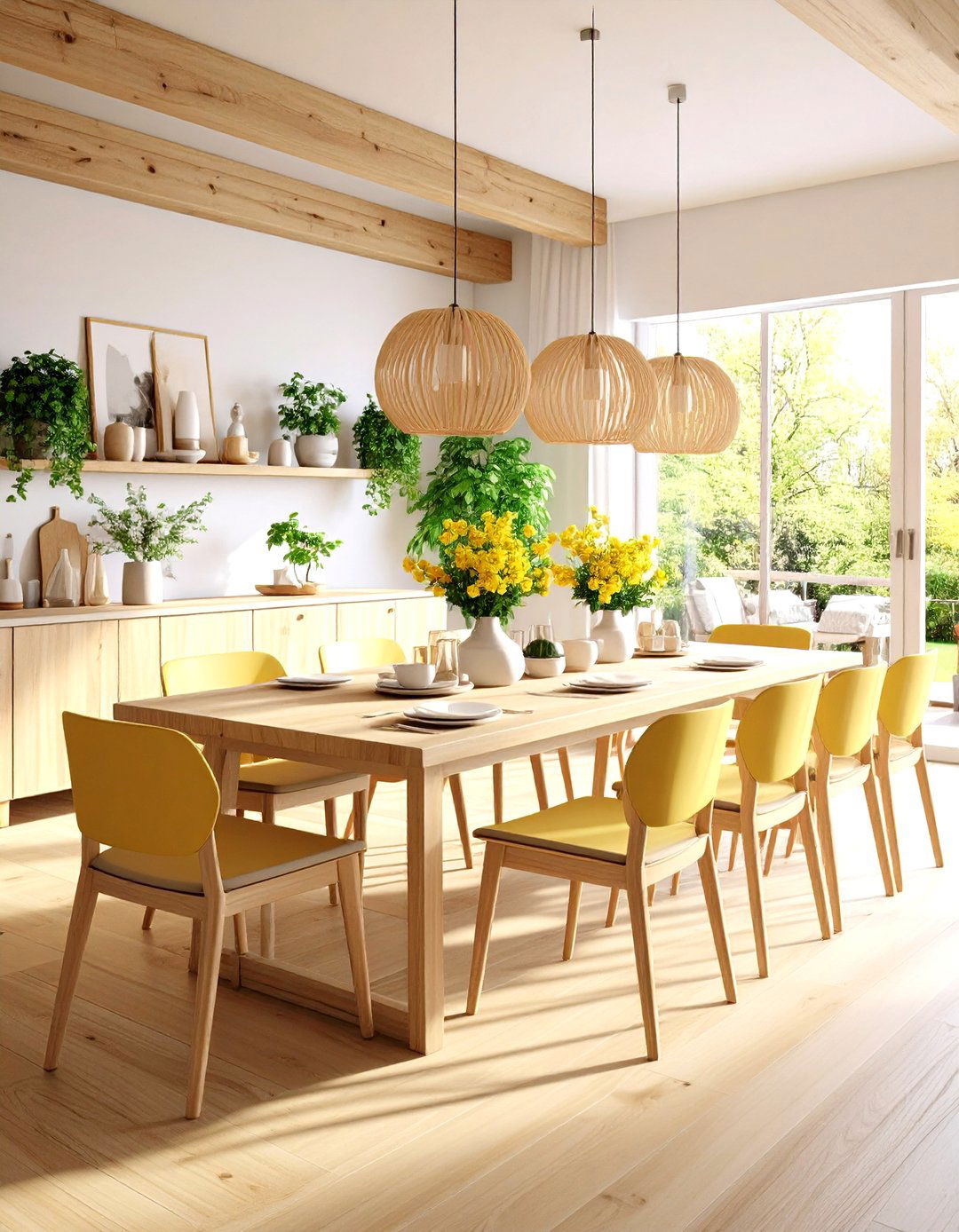
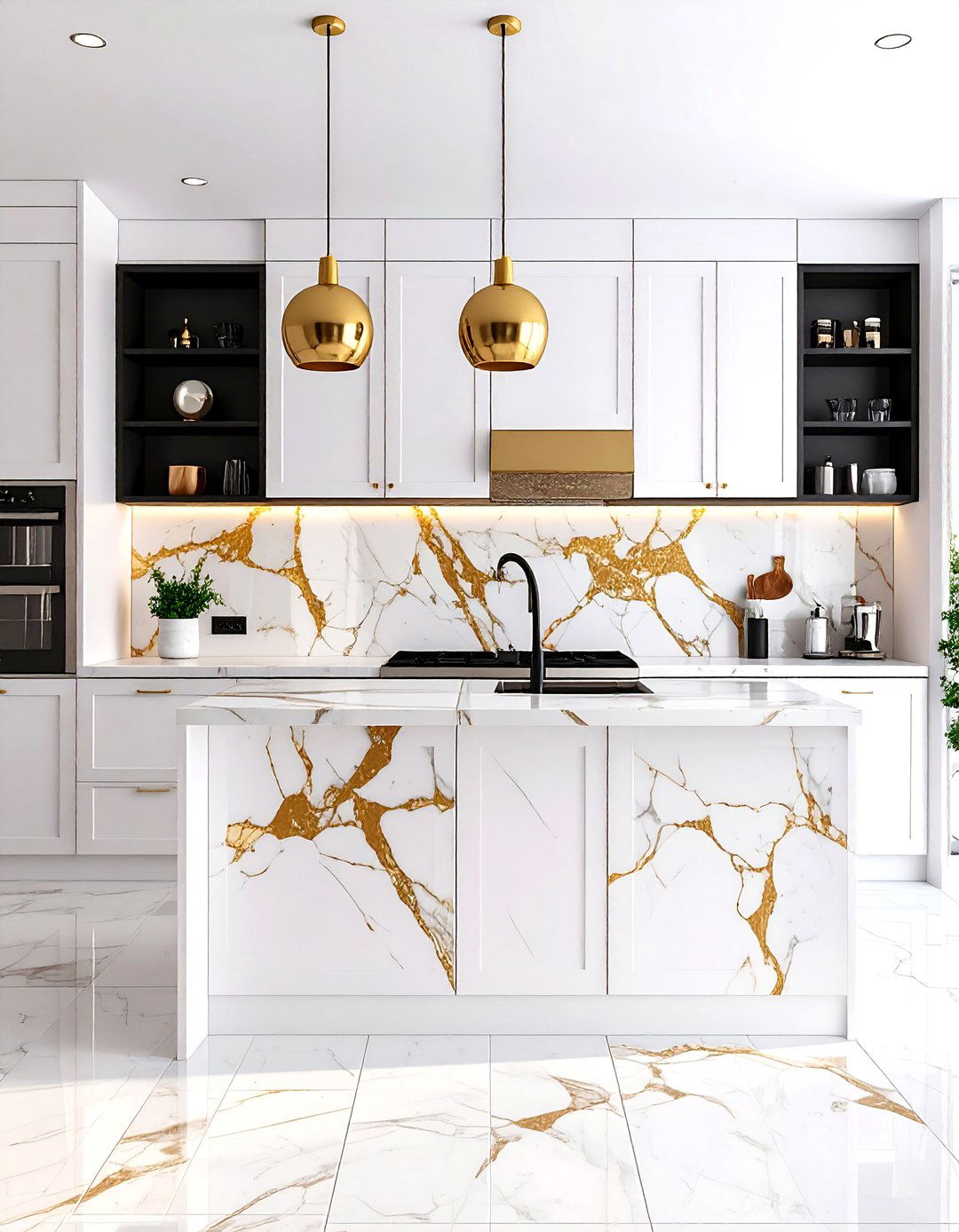
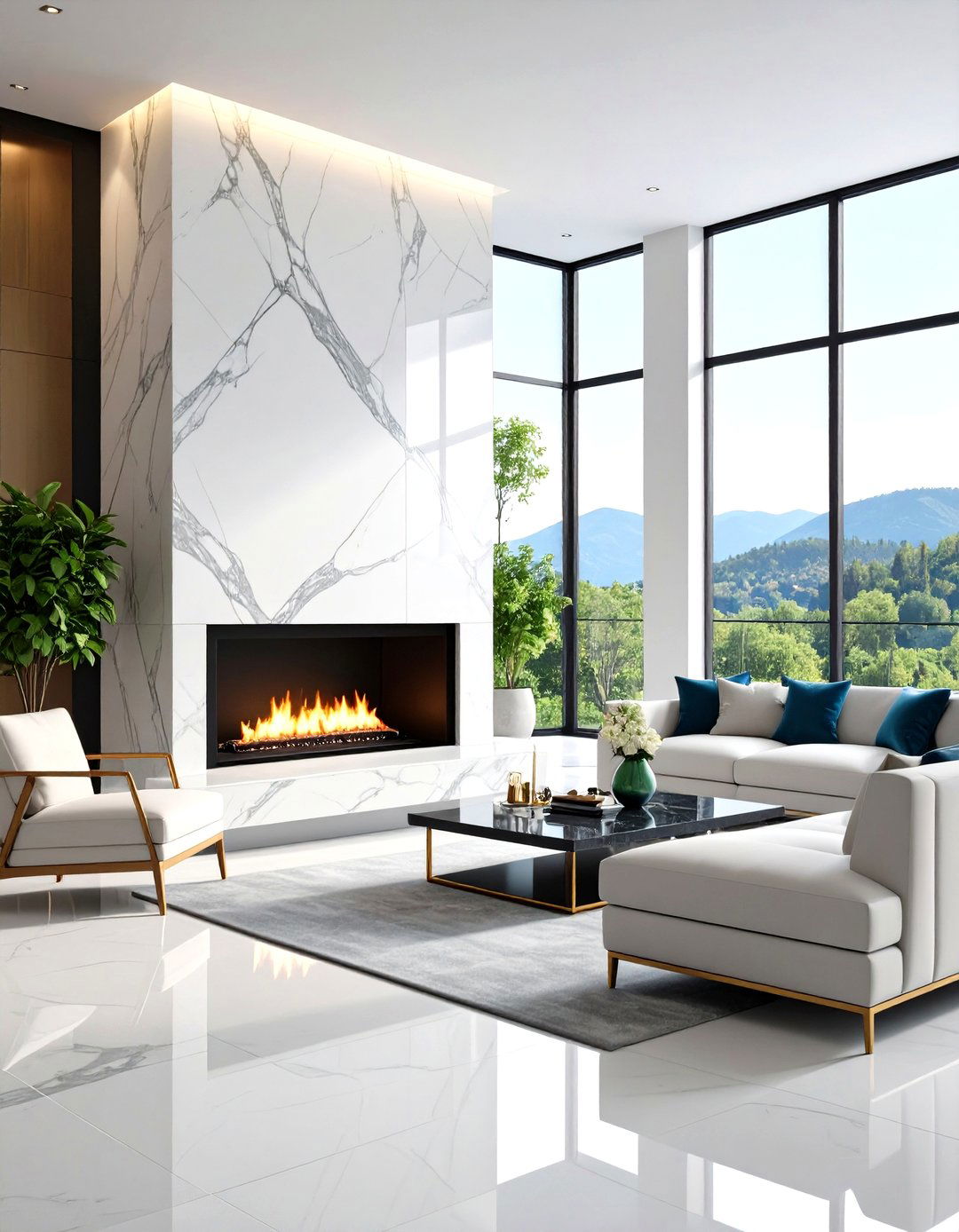
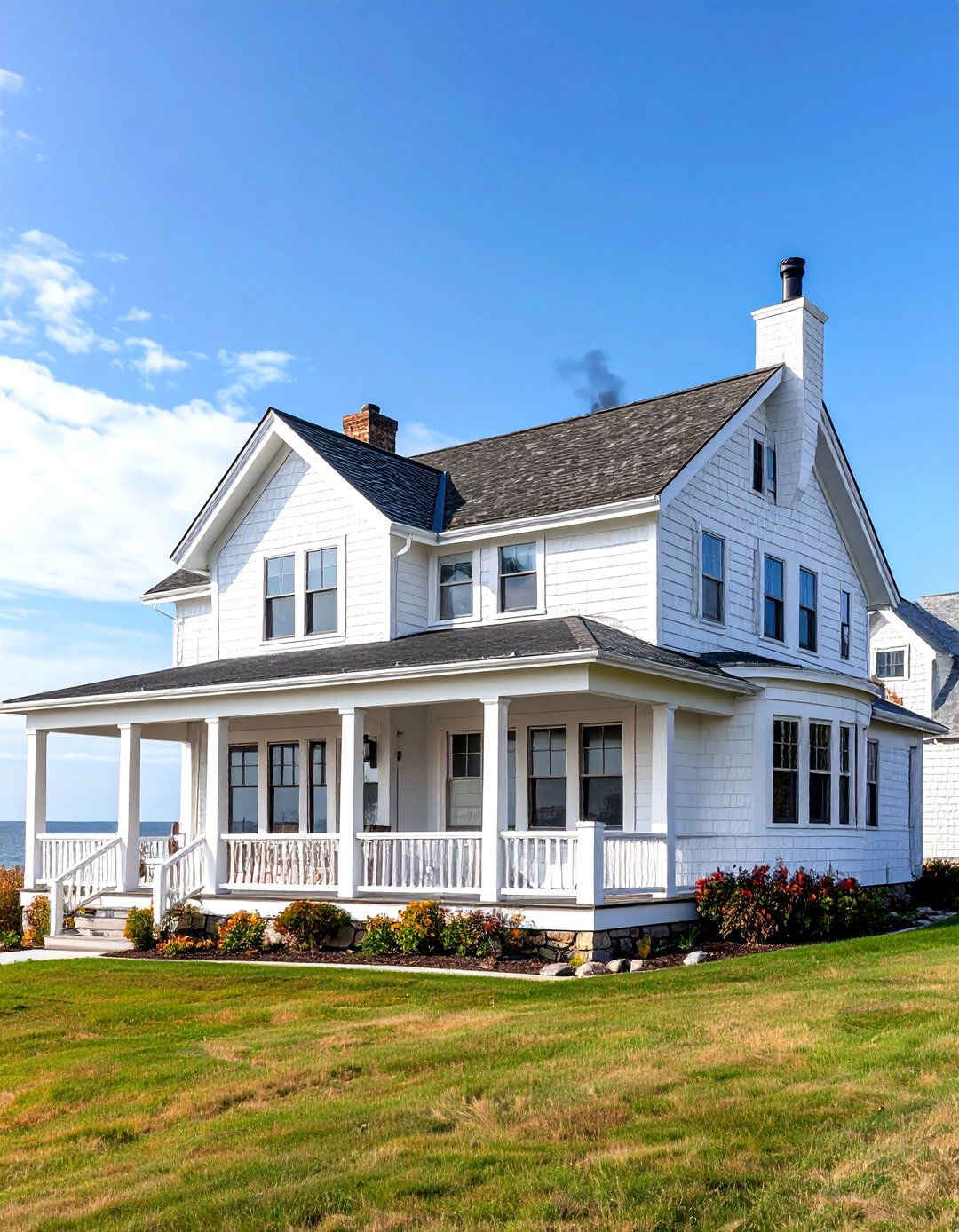

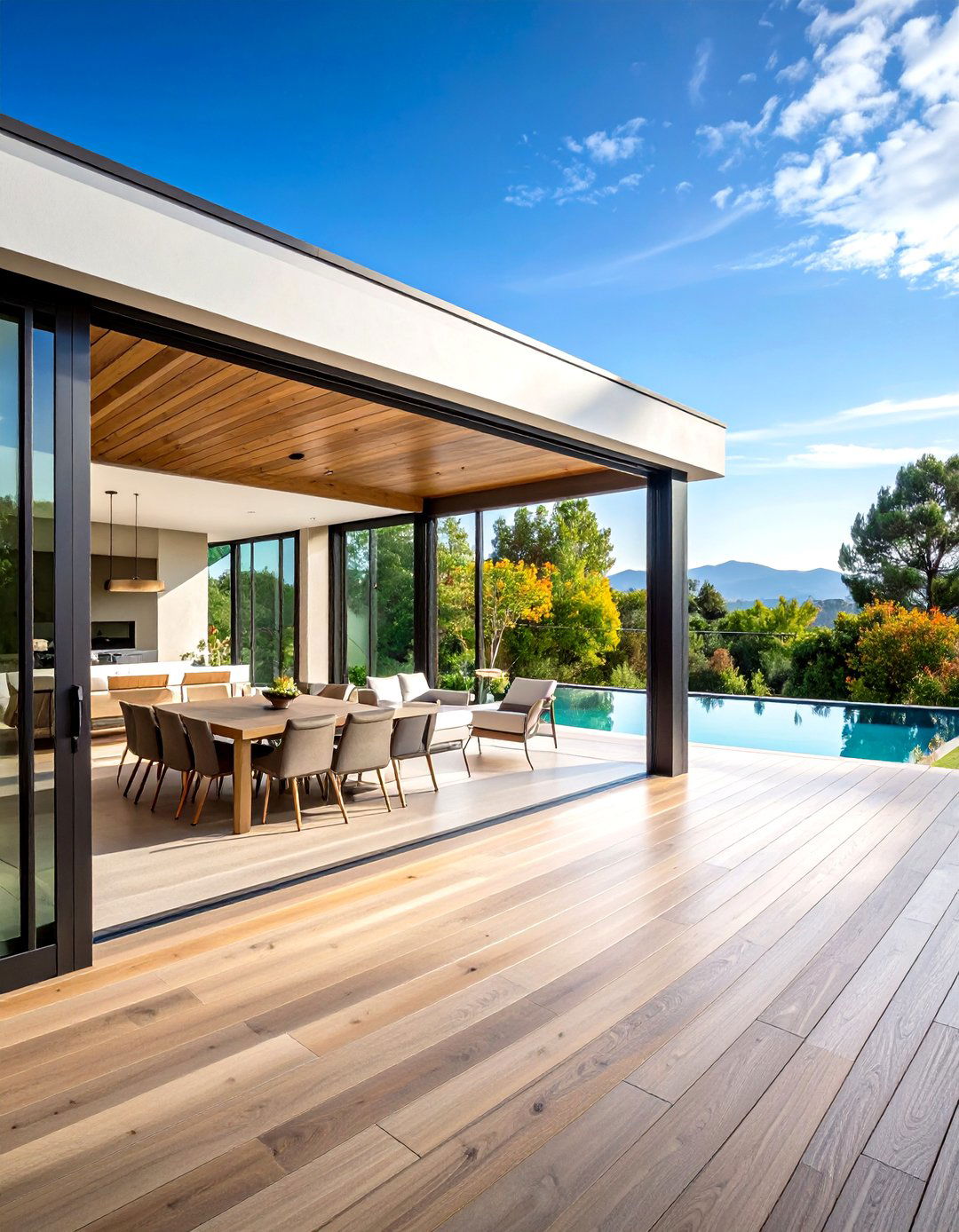
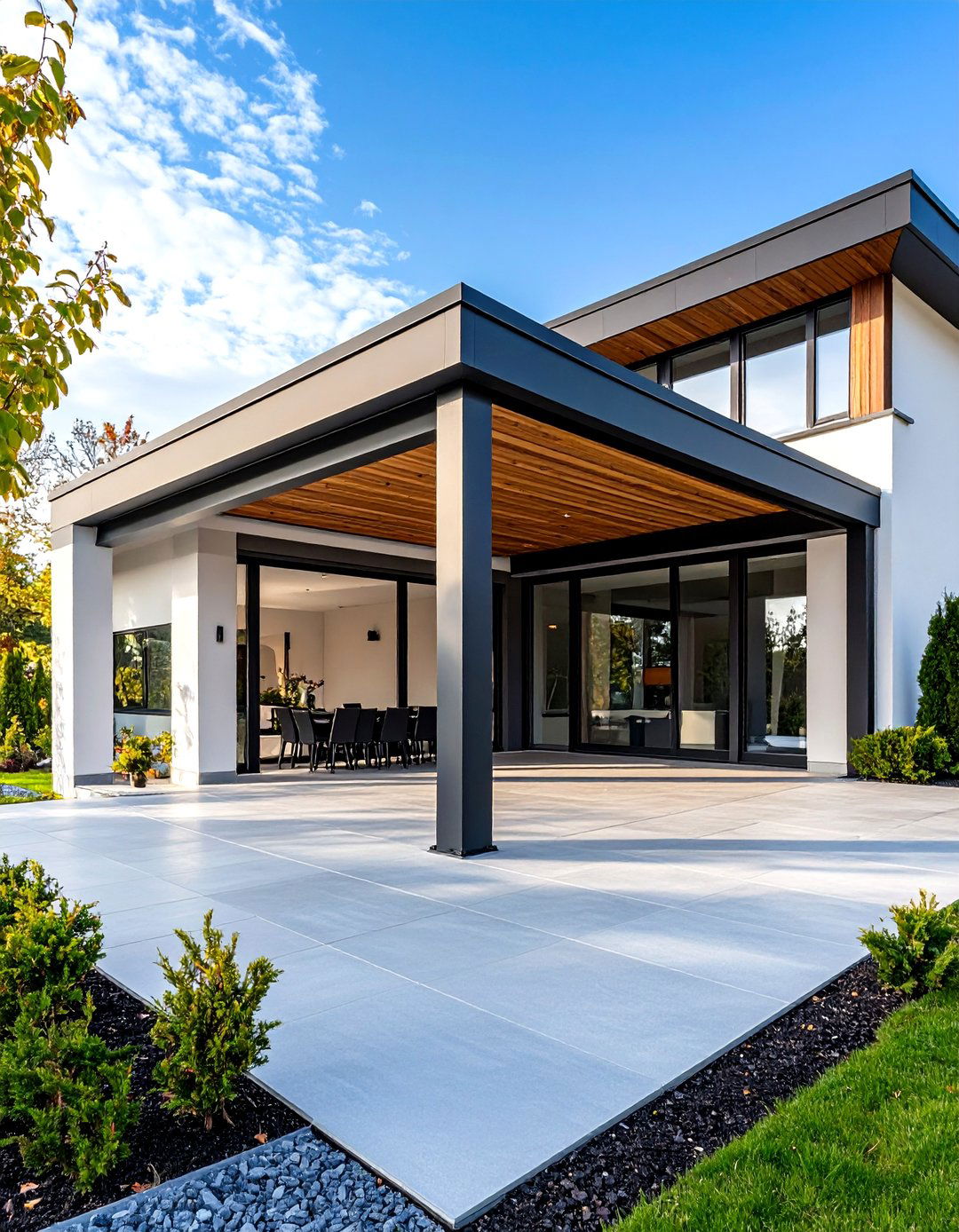

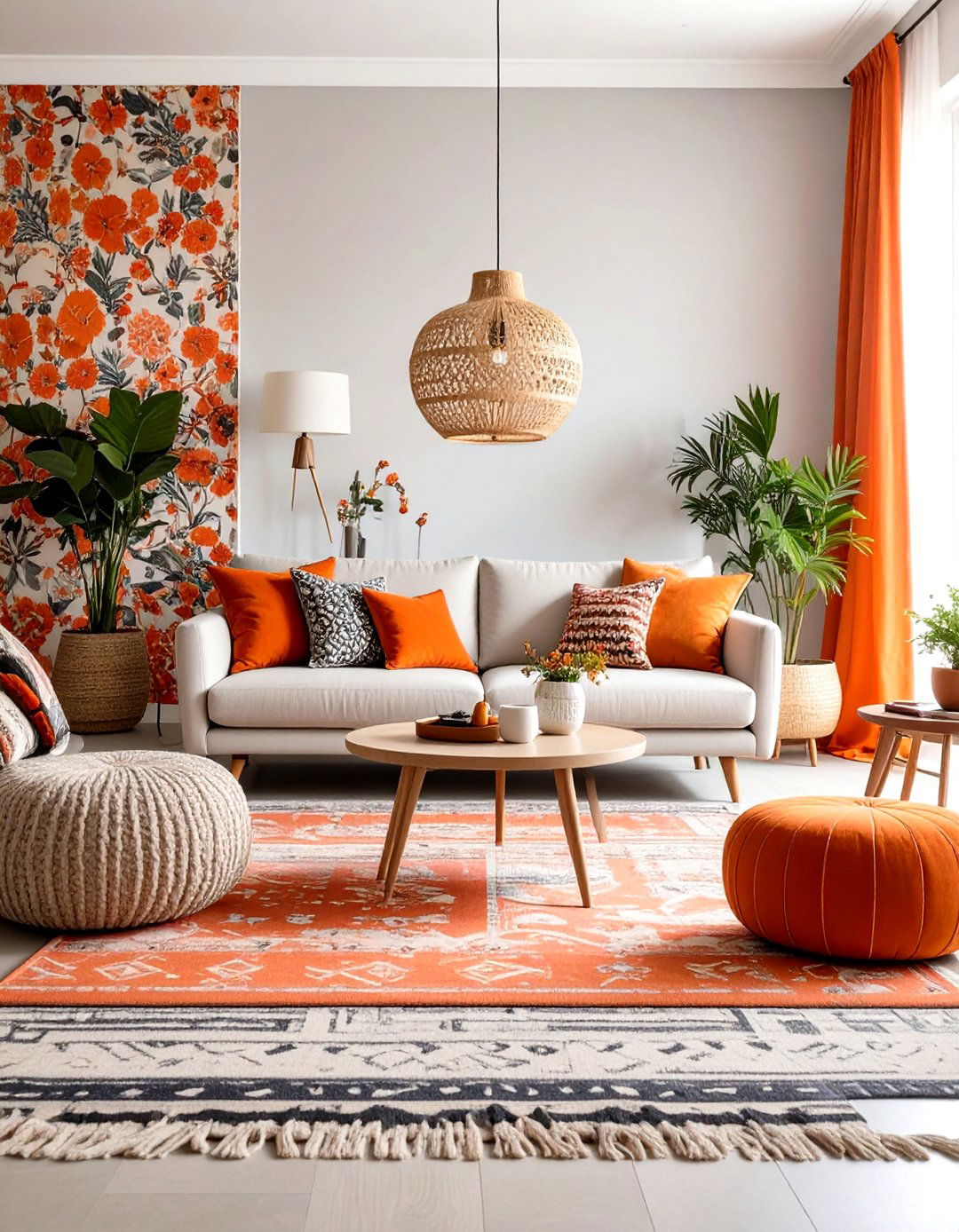



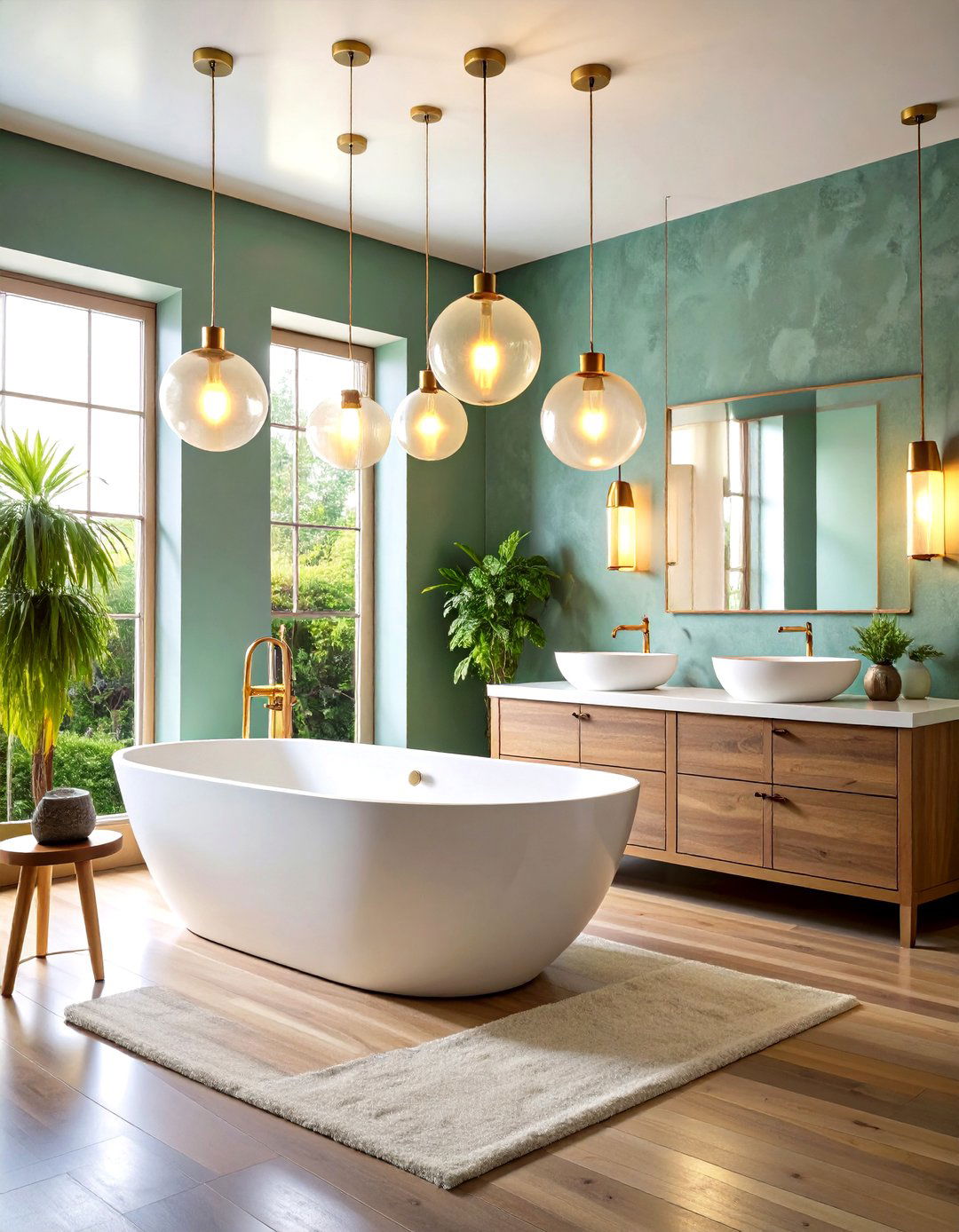
Leave a Reply